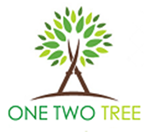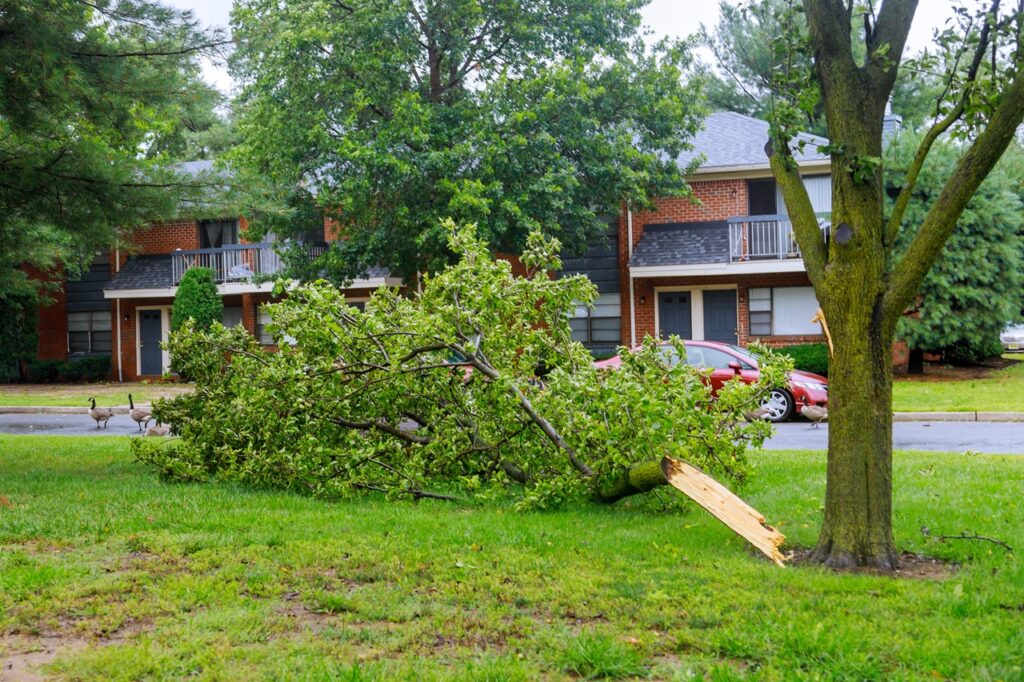Storms can wreak havoc on your property, and trees often bear the brunt of the damage. Fallen or damaged trees pose serious risks to your home, vehicles, and even personal safety. Knowing how to handle storm-damaged trees safely is essential in preventing further harm and beginning the cleanup process.
Assessing Storm Damage to Trees
After a storm, the first step is to assess the damage to your trees. This helps determine which trees can be saved and which need to be removed. Start by looking for obvious signs of damage, such as broken branches, leaning trunks, or uprooted trees. These are clear indicators that the tree may be unstable and pose a risk to your property or safety.
Next, examine the canopy and trunk for less obvious issues. Cracks, splits, or cavities in the trunk can weaken the tree and lead to future breakages. Also, check for hanging branches that could fall at any moment. Branches that are still attached but appear damaged should be pruned to avoid potential hazards.
In some cases, a tree may look intact but still be at risk due to root damage. If you notice exposed roots or the ground around the base of the tree appears lifted, the tree might be compromised. Understanding the extent of the root damage is essential, as this can affect the tree’s stability and long-term health. By thoroughly assessing these aspects, you can decide the best course of action for each tree in your yard.
Safety Precautions Before Starting Tree Removal
Removing a storm-damaged tree is a dangerous task that requires proper safety precautions. Before you begin, ensure you are wearing the right protective gear. This includes a hard hat, safety goggles, gloves, and sturdy boots. These items help protect you from falling debris and sharp tools.
Next, make sure the area around the tree is clear of people and pets. Keep a safe distance from the tree to avoid injury if the tree or branches fall unexpectedly. If the tree is near power lines, do not attempt to remove it yourself. Instead, contact your local utility company for assistance, as dealing with electricity requires special expertise.
Before cutting any branches or trunks, identify potential hazards. This includes checking for weak or hanging branches that could fall, ensuring the tree is stable, and observing the direction in which the tree is leaning. Always plan an escape route in case the tree falls in an unplanned direction. By taking these precautions, you can reduce the risk of injury and ensure a safer tree removal process.
Step-by-Step Guide to Removing Storm-Damaged Trees
Removing a storm-damaged tree involves several careful steps to ensure safety and effectiveness. Here’s a detailed guide to help you:
1. Plan the Removal: Before making any cuts, plan the entire removal process. Identify which parts of the tree need to be removed first. This often involves cutting smaller branches before tackling larger limbs and trunks.
2. Cut Smaller Branches First: Start by removing damaged or hanging branches. Use pruning shears or a handsaw for smaller branches. Cutting these first helps reduce the weight and makes the larger pieces more manageable.
3. Use Proper Tools: For larger branches and the trunk, you’ll need a chainsaw. Ensure your chainsaw is sharp and in good working condition to make clean and efficient cuts. Always use the chainsaw according to the manufacturer’s safety guidelines.
4. Cut in Sections: Instead of cutting the entire trunk in one go, work in sections. This prevents the tree from falling uncontrollably and allows for easier handling of the wood. Cut from the top down, making sections of manageable size.
5. Watch the Fall Path: Be mindful of where each branch and section will fall. Clear the area of obstacles and ensure no one is standing in the fall path. If necessary, use ropes to guide the direction of the fall.
Following these steps carefully will help you remove storm-damaged trees safely and efficiently. Assessing each part of the tree before cutting ensures stability and minimizes risks.
Post-Removal Care: Ensuring Yard Safety and Health
Once the storm-damaged tree is removed, there are essential steps to ensure your yard remains safe and healthy. Start with cleaning up debris. Fallen leaves, branches, and any leftover wood pieces should be promptly removed. This prevents pests and promotes a tidy appearance in your yard.
Next, inspect the surrounding trees and plants for damage. Sometimes, the impact of a falling tree can injure nearby vegetation. Prune any damaged branches to prevent disease and encourage healthy regrowth. This helps in maintaining the overall health of your landscape.
Consider stump grinding for the removed tree. Leaving a stump can lead to rot and attract insects. Grinding the stump down to ground level eliminates this risk and makes way for new plantings. After stump grinding, fill the area with soil and plant grass or flowers to blend the spot into your yard.
Regularly monitor your yard after the removal process. Check for signs of pests or disease, and address any issues promptly. Maintaining a healthy yard post-removal ensures a thriving and beautiful landscape.
Conclusion
Safely removing trees after a storm is crucial for maintaining the safety and beauty of your property. From assessing damage to taking safety precautions and following a step-by-step removal guide, each phase is important in handling storm-damaged trees effectively. Post-removal care further ensures that your yard remains healthy and free of hazards.
Taking the time to properly address storm-damaged trees can prevent future problems and enhance the overall appearance of your landscape. If you need professional help, One Two Tree is here to assist with expert tree removal services. Contact our Atlanta tree professionals to ensure your trees and yard receive the best care possible.

